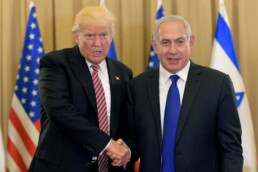The Trump–Netanyahu Gaza Plan, presented on 29 September 2025, promises humanitarian relief, Israeli withdrawal, and Gaza’s reconstruction, yet its externally imposed structure and lack of Palestinian ownership undermine its legitimacy, feasibility, and potential for durable peace
By Sotiris Mitralexis, GeoTrends
When U.S. President Donald Trump and Prime Minister Benjamin Netanyahu presented a twenty-point framework on 29 September 2025 to terminate the Gaza genocide (as it is being unequivocally termed by nearly every international legal body possessing the authority to do so), the document was pitched as a compact of immediate humanitarian relief, a staged Israeli withdrawal, and a blueprint for the technocratic reconstruction of the Strip. The paper proposes an immediate cessation of hostilities if both parties accept, a coordinated hostage exchange with a short verification window, the demilitarisation of Hamas, and the placement of Gaza under a transitional, internationally supervised technocratic administration.

The draft President Trump discussed with representatives of Arab and Muslim countries was significantly revised by PM Netanyahu before publication, much to the dismay of Arab and Muslim interlocutors. Yet following near-universal backing, it was provisionally accepted by Hamas, which in turn proposed revisions. Irrespective of the fate of its current provisional acceptance and of the possibility of an attempt to actually implement it, however, is this a feasible plan that could deliver peace?
Ownership and legitimacy
The mechanics of the proposal reveal, on close inspection, a series of design choices that undermine its ability to stabilise the ground or to produce a durable political settlement. The first and most elemental problem is one of ownership. The plan was formulated and presented by external principals, with Israeli drafting influence acknowledged in multiple accounts, and with Palestinian participation at best peripheral.
That absence of genuine Palestinian involvement matters not as an abstract norm but as a practical precondition for implementation, because political settlements imposed from above command neither the trust nor the institutional leverage necessary to police compliance, adjudicate disputes, or absorb spoilers. Contemporary reporting makes clear that neither the Palestinian Authority nor Hamas were party to the drafting, and that Hamas was presented with a tight ultimatum to accept or face renewed force. The group’s subsequent, conditional response underscores how a paper agreement without robust Palestinian buy-in becomes a brittle instrument.
Recent Posts
U.S. Military Willing To Attack “Designated Terrorist Organizations” Within America, General Says
December 19, 2025
Take Action Now “If I had no concerns and I was confident in the lawful order, I would definitely execute that order.”By Nick Turse, The……
DOJ Won’t Meet Friday Deadline To Release All The Epstein Files
December 19, 2025
Take Action Now The delay means the White House is in apparent conflict with a law President Donald Trump signed in November.By Gregory…
Privatize USPS? Mail Carriers Have A Better Idea
December 18, 2025
Take Action Now After battling for a fair contract, USPS workers face the threat of privatization, which they warn will harm all Americans.By Mel…
Senate Passes Massive $901 Billion National Defense Authorization Act, Sending It To Trump’s Desk
December 18, 2025
Take Action Now When combined with a supplemental bill passed earlier this year, the NDAA will bring the US military budget to over $1 trillionBy…




